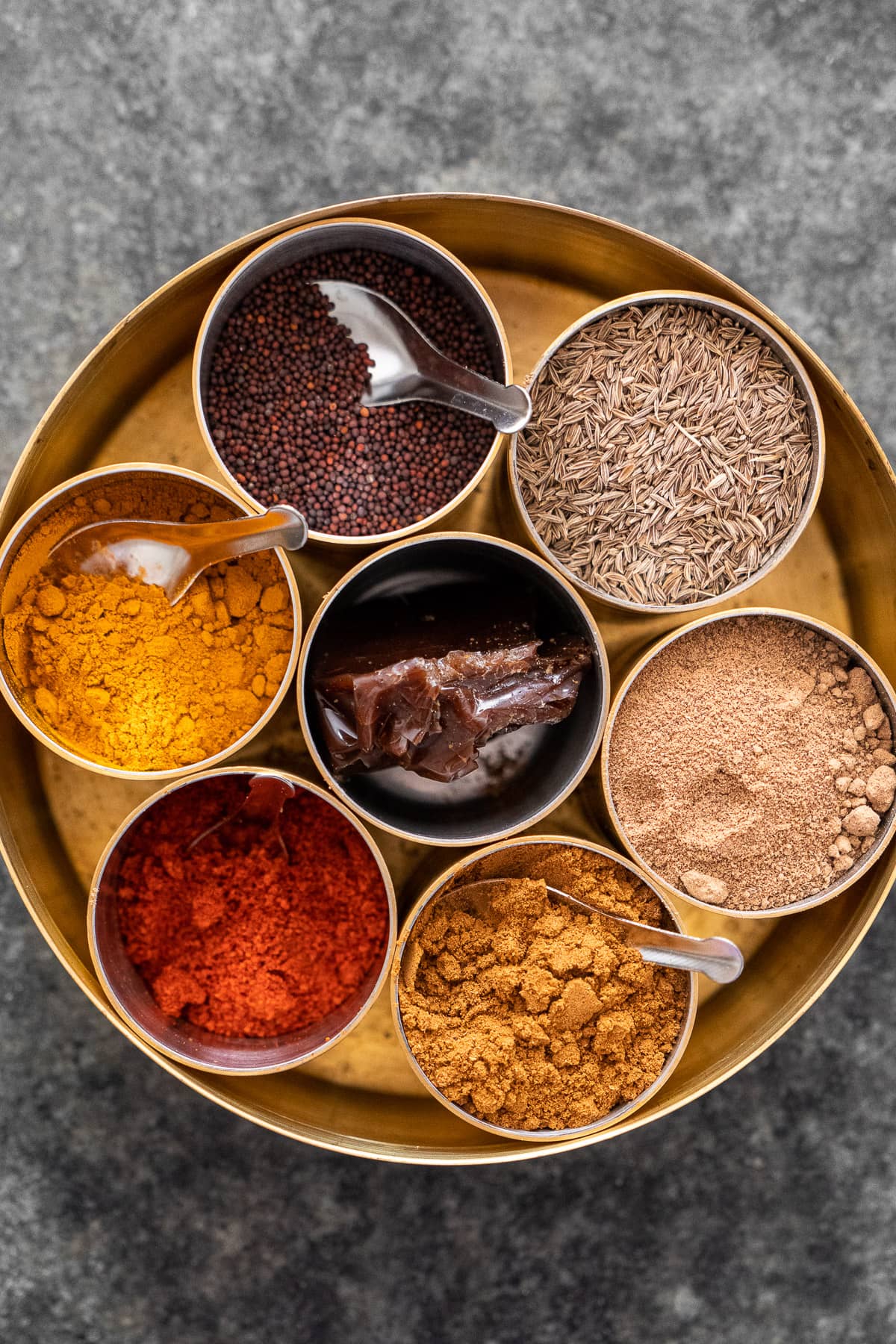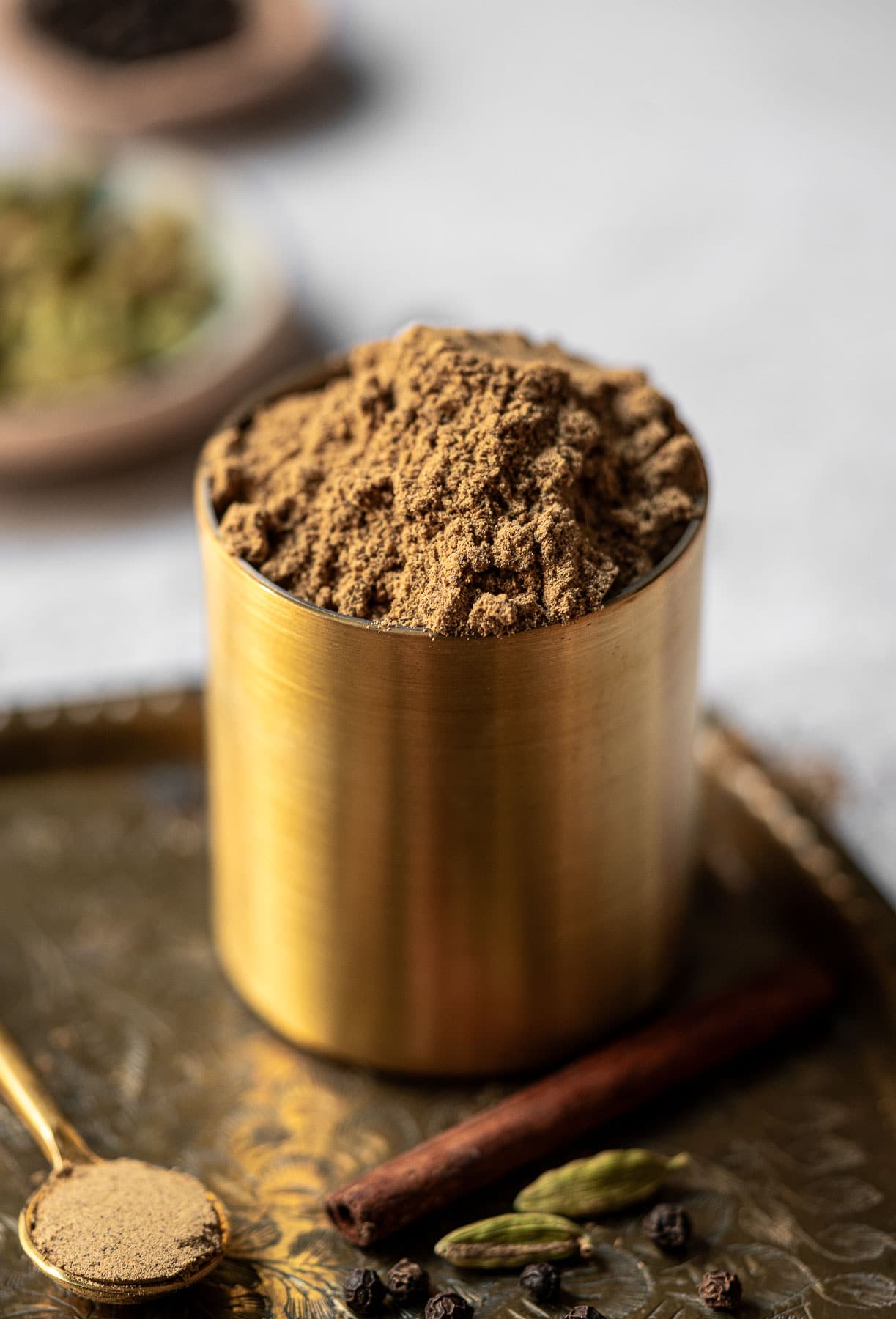A masala dabba, or a container for spices, can be found in almost every Indian kitchen across the diaspora. It’s no secret that an Indian kitchen is well stocked and full of spices to develop bold flavor in every dish. However, that means it’s easy for chaos to unfold when accumulating the necessary spices for everyday use, speciality spices, dried herbs, and spices from that vendor down the street that makes the best chaat masala. My mom always stored her favorites in an electric spinning carousel which was great. Until the battery ran out. Meanwhile, I separately store my American and other worldly spices in glass jars with labels in one cabinet while all my bulk-sized Indian ground and whole spices are stored in larger glass containers in another cabinet. And that’s why I love my masala dabba. My favorite and most-used spices sit right next to the stove along with the cooking oil, salt, and pepper for easy access. You’ll love this Guide to Essential Indian Cooking Tools if you’re looking to expand your kitchen.
What is a Masala Dabba used for?
What Kind of Spices to keep in the Dabba
Rotating Spices
Where to Buy a Masala Dabba
Features to Consider
Care Instructions
An Heirloom for Indians
It’s kept within reach from the stove in a drawer or on the countertop right next to the salt, pepper, and cooking utensils. It holds the most commonly used spices for easy access. I grew up watching my mother keep the dabba under her arm as she added spices, measured by the ancestors, into dals and sabzis. She would continue to adjust the amount of spices based on the smell and look as she developed flavor until she was satisfied. My personal masala dabba has amchur, garam masala, chili powder, turmeric, mustard seeds, cumin seeds, and asafoetida. I chose the spices based on the Indian dishes I make most often - Whole Masoor Dal and Chole. It’s as simple as that! You can absolutely get creative with it. I’ve gifted my boyfriend’s mother with a dabba dedicated to making chai. The dabba had green cardamom pods, cloves, star anise, peppercorns, cinnamon, fennel, and tea leaves. It’s ideal to keep your most-used spices in the dabba, so you’re refilling the katoris often. This ensures the freshest flavor and aroma. When you’re switching out a spice, be sure to wash the katori with warm water and soap. Let it dry fully before filling it up again. A brass masala dabba is an absolutely stunning statement piece and cooking tool in a kitchen, but it doesn’t come cheap. The brass dabba with katoris (small bowls) retails for $200 at Diaspora Co. It’s great for a thoughtful gift or as an investment for generations to come. You can rest easy knowing the workers were paid fair wages for their craftsmanship. Stainless steel dabbas can be washed in warm soapy water. They should be dried completely before filling it with spices again. Brass dabbas require a bit more care and will also patina over time. Season it with coconut oil to protect the brass, just like you would a cast iron pan. If it has some grease splatters, use a metal cleaning paste and follow the packaging instructions. Another at-home option for cleaning brass is to use vinegar and flour to create a paste. Scrub the paste on to the dabba with a toothbrush. Rinse it in warm water and fully dry it before using. In India, my dadaji (my paternal grandfather), had all of the stainless steel dishes engraved with his initials in salt. These plates and bowls are still used in my parent’s household on a daily basis, and will hopefully be used in my household one day as well. It’s the same case with masala dabbas. One stainless steel or brass dabba lasts for decades with some maintenance. If you’d like to get yours engraved, search in your area for a skilled metal worker that is able to provide engraving services.


